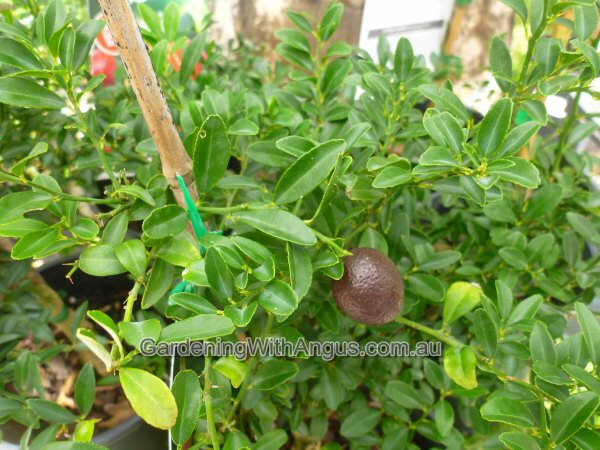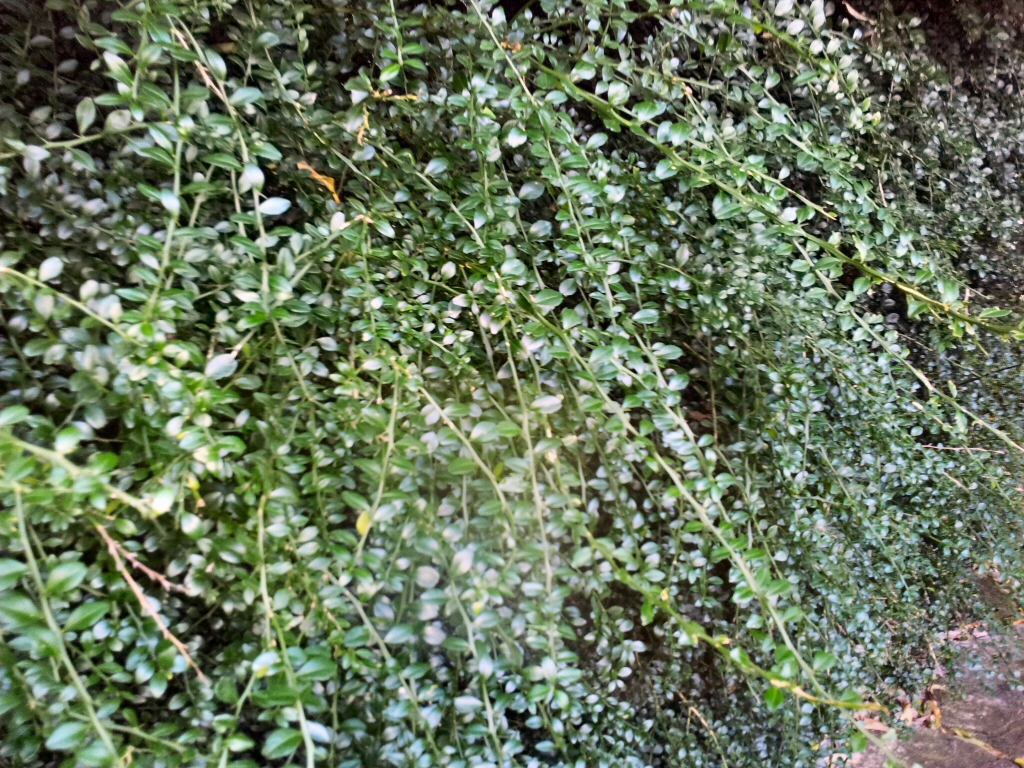One of the great pleasures of gardening is in using freshly picked edible plants to add a special touch to meals. Undoubtedly, the various members of Citrus group are outstanding in this regard with both fruits and foliage being useful in a culinary sense. The abundance of aromatic oils in most parts of the plants means that even the fruit rinds can add that special touch to recipes.
Although oranges and lemons grow into substantial trees, there are other Citrus such as Mandarins, Kumquats and Limes that are much smaller and it is certainly possible to grow and fruit these types in large pots. This is by no means a new concept as in Europe in the seventeenth and eighteenth centuries elaborately constructed glasshouses known as orangeries were heated to overwinter the frost tender citrus family. Louis XIV created the most famous of all orangeries at Versailles where the Lemon trees were grown in solid silver tubs, an idea would certainly make a statement in your courtyard garden.
In addition to the naturally smaller types of citrus, there are larger varieties that are grafted onto dwarfing rootstocks which will also perform well in pots. Ask your nursery person about these varieties which are becoming more common in the plant trade.
An interesting thing about Citrus is the way that they have evolved in cultivation in much the same way as domesticated animals such as horses and dogs. Even though the original wild species of Citrus come from southeast Asia some of the most popular cultivated types have exotic names such as the Palestine Sweet Lime, Tahiti and West Indian Limes or the Lisbon Lemon. These names reflect the fact that these varieties have arisen in cultivation in far flung corners of the globe. The geographical range of these exotic variety names is also a testimony to just how adaptable this group is to a vast array of climatic conditions, with the only major weakness being a susceptibility to heavy frost.
Growing Kumquats in pots
Possibly the best Citrus for smaller gardens would be the Nagami or Oval Kumquat (Fortunella margarita) or the Marumi or Round Kumquat (Fortunella japonica). The tiny fruits of these very attractive plants can be consumed whole or used in various culinary pursuits. Both species grow to only a couple of metres and are therefore easily grown in even a moderately sized container of say 25-30 cm diameter.
Kumquats also lend themselves to the formal look of a standard which is created by allowing the main leader stem to reach a height of 1.5-2 metres and then pinching out the growing tips every few weeks during the growing season so that a spherical shape is created.
Growing Limes in pots
There are many useful forms of the Lime (Citrus aurantifolia), all growing to around the 4-5 metre mark. There is the Tahiti and Persian lime with their relatively large fruits while the Mexican, West Indian and Colombian Sweet limes have smaller fruits with stronger flavour. The attractively lobed, shiny leaves of the Kaffir lime are highly prized as an essential flavouring for Thai and other Asian cuisines.
Growing Mandarins in pots
The Mandarin (C. reticulata) is another of the more compact Citrus species growing to a very manageable 3-4 metres tall. Whilst ‘Imperial’ is perhaps the hardiest of the Mandarins, ‘Ellendale’ has very tasty sweet fruit while ‘Clementine’ Mandarin has proven to be a better performer in cooler climates such as Melbourne.
Growing native finger limes in pots
Probably the best place to grow the very fashionable Australian native finger lime is in a large container. Most varieties have prickly foliage, and confining them to a pot ensures that you can control weeds easily with less need for body armour. They are sure to be a talking point, as the small oval fruit come in various colours from yellow to red to a dark purple variety. Place your pot near your kitchen, and pick the fruit for a great flavour hit for cooking- the pulp looks a lot like caviar and has a wonderful pop.
How do I maintain Citrus in pots?
The tantalising tastes of the various Citrus varieties is reason alone to grow them, however, they also tempt another of our senses with the heady perfume of their white starry flowers. Most types flower in spring and this is followed by the development of fruit through the summer, a time when it is crucial to keep them evenly watered through regular irrigation (say one deep watering a week) and a 10 cm layer of mulch such as Lucerne hay. It is important to keep the mulch from being in direct contact with the trunk to prevent fungal problems such as Collar Rot.
Citrus of all types will benefit from a light trim in late winter to keep them compact and bushy. It is possible to prune back to wood the thickness of your index finger although this is not recommended unless the tree is really in need of reshaping.
The most common pest problem is leaf miner during the warmer weather, so be on the lookout for leaves that have a scribble pattern on the surface. It occurs mostly on fresh new growth and affected leaves can be pinched off to prevent the problem spreading. Scale is also a common problem, which is a small waxy pest that clings to stems and leaves and is a sap sucker. Treatment is simple- spray with a white or pest oil spray, which is non toxic except to the scale. Oil spray works by smothering the pest.
For Citrus in large containers use a potting mix specially designed for this purpose such as a ‘Terracotta and Tub Mix’ which is designed to not only hold plenty of water, but also give the roots the good drainage they need to thrive. It is also a good move to sprinkle slow release fertiliser evenly on top of the mix once during early spring and again in late summer to keep the plants growing well. Water storing granules can also be forked into the mix if the plants are drying out excessively in the summer months.
Perhaps the sign that you really have made your mark as a gardener is when you can proudly serve your Christmas party guests with their drinks spiced up with a twist of home grown Citrus!
Learn more about citrus-


